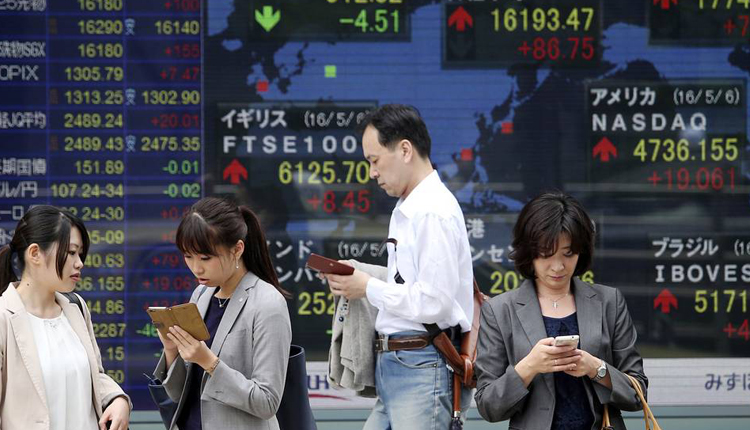Asian stocks were mostly higher in Tuesday trade as investors awaited the start of a closely-watched meeting by the U.S. Federal Reserve, set to kick off later stateside.
Shares in mainland China rose by the afternoon. The Shanghai composite was up slightly and the Shenzhen component gained 0.29%, while the Shenzhen composite was higher by 0.243%.
In Hong Kong, the Hang Seng index added about 0.7%, with shares of Chinese tech heavyweight Tencent jumping more than 1%.
Over in South Korea, the Kospi gained 0.4% as shares of biopharmaceutical firm Celltrion rose more than 1%. Meanwhile, the S&P/ASX 200 in Australia added 0.56%.
Japan’s Nikkei 225 bucked the overall trend as it slipped 0.72%, as shares of index heavyweights Fast Retailing, Softbank Group, and Fanuc fell. The Topix index also declined 0.66%.
The Fed is scheduled to start a two-day monetary policy meeting on Tuesday stateside. Expectations for any policy changes are low, but investors will look for clues about potential rate cuts this year.
“Recent speeches by Fed officials, including Fed chair Jay Powell, have indicated a growing wariness of the inflation outlook and a willingness to act if required. We expect the (Federal Open Market Committee) to formalise this view on Wednesday by hinting that near‑term cuts to the Fed funds rate are coming. We expect the Fed will cut the Fed funds rate in December, but the risk is skewed to earlier cuts,” Kim Mundy, currency strategist at Commonwealth Bank of Australia, wrote in a note.
The Fed will make its monetary policy announcement on Wednesday.
One economist told CNBC that other central banks such as those in Japan and Indonesia, also set to have their own meetings later in the week, could take direction from the Fed.
“If the Fed is easing, it certainly means that they expect (that) the U.S. economy … is slowing. If the U.S. economy is slowing, then very likely the global economy will be feeling that … pain as well,” Steve Cochrane, chief Asia Pacific economist at Moody’s Analytics, told CNBC’s “Squawk Box” on Tuesday.
That, he said, would give the central banks regionally “a chance to ease as well and try to add some stimulus.”
Meanwhile, on the U.S.-China trade front, hundreds of businesses stateside are attempting to send a message to U.S. President Donald Trump’s administration to discourage them from increasing tariffs on China.
That comes as U.S. Commerce Secretary Wilbur Ross says Trump is “perfectly happy ” to impose new tariffs on China if the two economic powerhouses don’t “make a deal.”
Currencies and oil
The U.S. dollar index, which tracks the greenback against a basket of its peers, was at 97.461 after seeing levels below 97.4 yesterday.
The Japanese yen traded at 108.29 against the dollar after touching levels above 108.6 in the previous session, while the Australian dollar changed hands at $0.6836 after seeing highs around $0.688 yesterday.
Oil prices were lower in the afternoon of Asian trading hours, with the international benchmark Brent crude futures contract dipping slightly to $60.89 per barrel, while U.S. crude futures declined 0.1% to $51.88 per barrel.
Tensions remained high in the Middle East following attacks on two oil tankers in the Gulf of Oman, with the Pentagon preparing to send about 1,000 more U.S. troops to the region.
Source: CNBC



